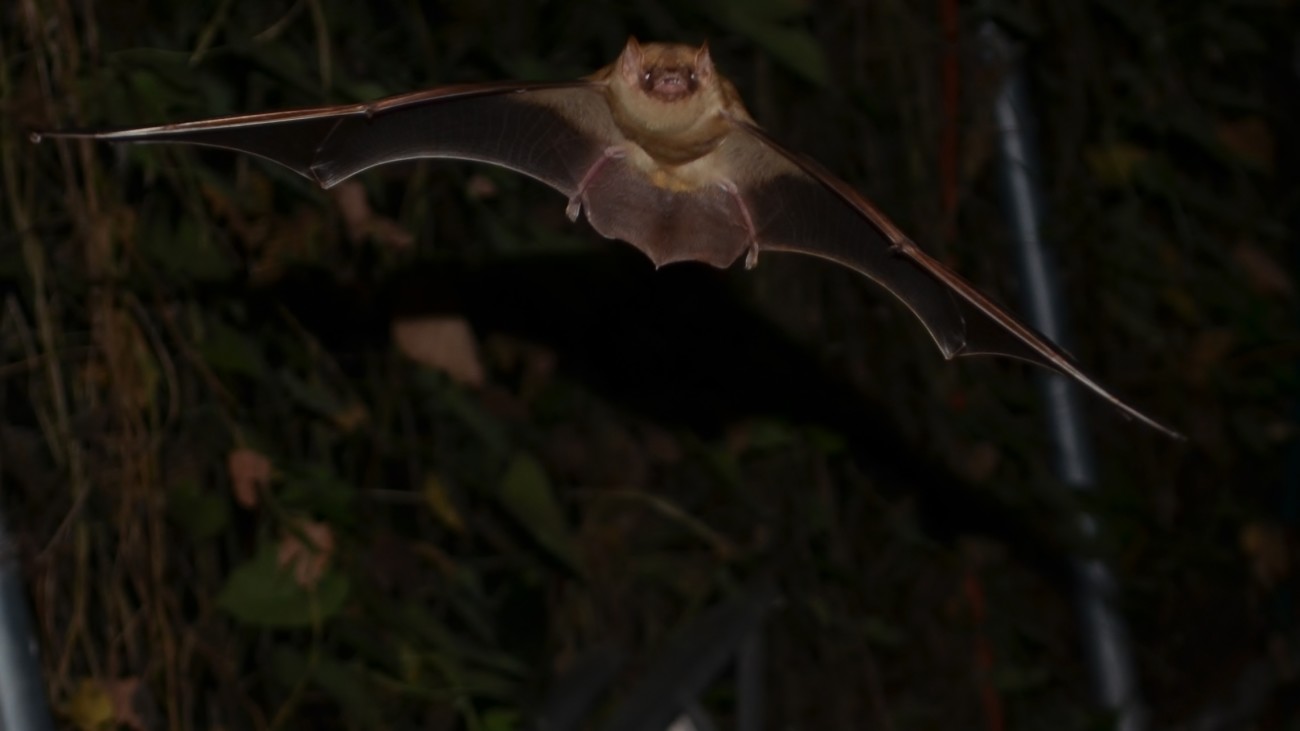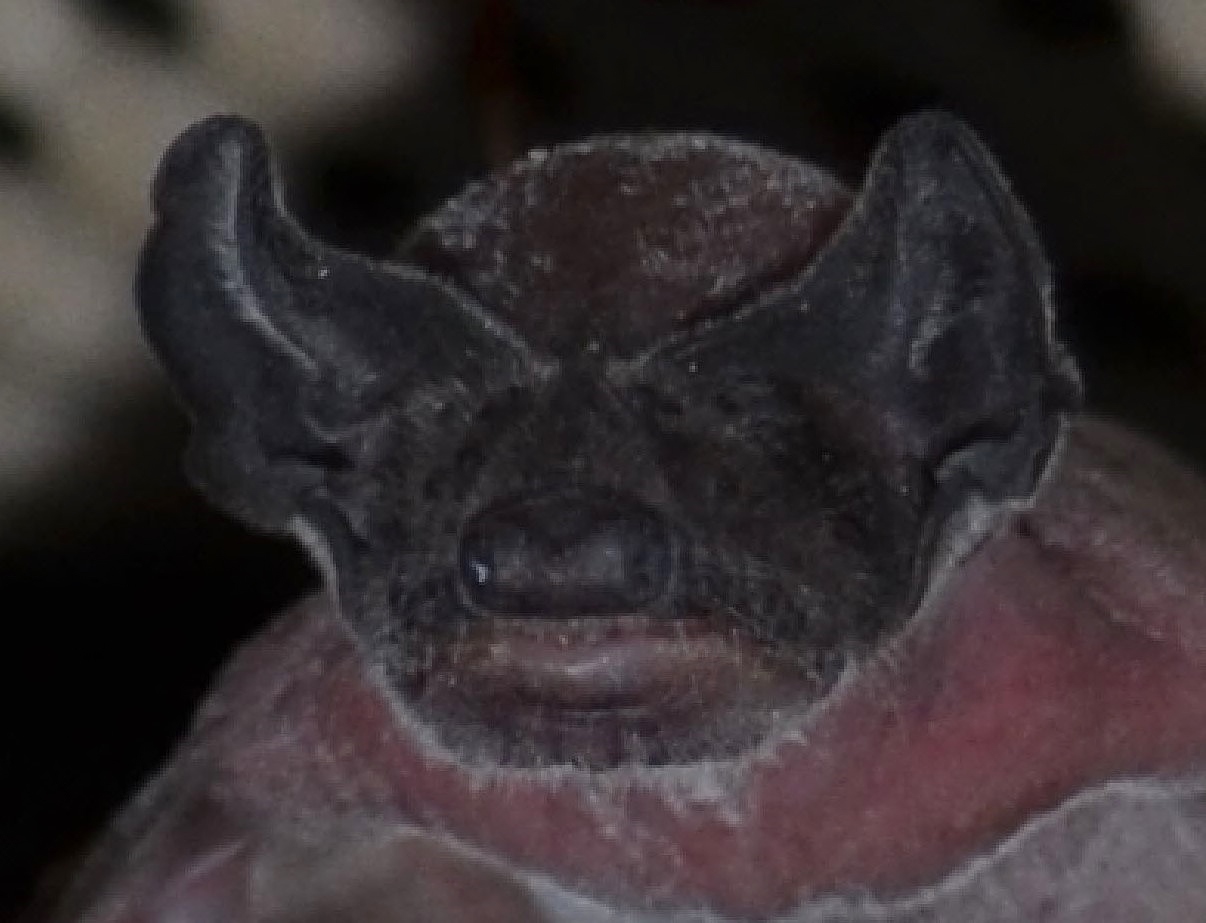The Well-Groomed Bat
It’s a good day to be a bat!
It’s a good day to be a bat!
We’ve always wondered why every morning we find whole moths floating in the water of the drinking trough, in the bat garden. These are whole moths, not just the wings we would expect to find, when bats catch the moths, shuck the wings, and eat the rest.
So why so many whole, often live, moths in the water?




Here a Seminole bat controls a moth
Last night we finally got proof of what we suspected to be the reason.
We have a blacklight that attracts insects into the garden. It hangs from the center ridge of the aviary and is directly over the drinking pool. The pool is also situated in the center so that it collects the drips from the misters, which are also hung from the center ridge.
Our flight school bats fly in wide circles that are tangent to the light, so that they can catch any moth that happens to be flying at the wrong place at the wrong time. When they catch one, they curl up into a ball as they fly, to control the moth and bring it up to their mouths.
If one watches a moth circle under the light, within seconds a bat will zoom in and snatch the moth.
Last night we watched while evening bats did just that. 

But in between catches of fluttering moths, we noticed times where moths we were watching, just before a bat swooped in, would fold their wings and plummet downwards, splash-landing in the pool!
We have often heard of moths evolving defenses to counter the amazing bio-sonar the bats employ to hunt them. This arms race has been going on since bats developed echolocation around 25 million years ago, and has manifested in countless ways ever since. Some moth species have it hard-wired in their DNA that, upon hearing bat bio-sonar, their synapses fire in such a way that paralyzes their wings, causing them to plummet downward, away from the bats closing trajectory. This seems to work quite well, unless the moths just happen to be over our bat drinking trough!
So now we know why so many moths are found each morning in the pool! We just may move the light location so that these moths land in the garden instead, and rise once more to provide additional foraging opportunities for our bats as they hone their hunting skills. This will be a big benefit when we have a full house of bats in flight school, with not enough moths to go around.
We love these little insights that nightly observation provides in the aviary!
The aviary seems huge now that most of this year’s class has graduated from flight school. But now that they’re not grabbing all the visual attention, we can better analyze the skills of the more cryptic species, such as this evening bat, to decide who else is ready for release.

Kendalia bat from Linda Garriot

It was a normal night in the aviary, watching the bats fly, seeing who looks ready for release and who needs more time. The eastern red pup that was low on the side wall this morning was flying beautifully so he seems to be recovered. The northern yellows were flying with astonishing speed and power and I just managed to get a shot of one of the pups (at bottom of the post).
All of a sudden, the yellows crashed back into their palm fronds, I looked up, saw a shadow, and just got this shot as a Barred Owl flew right over the flight cage with a bluejay in it’s talons!

All the bats took cover so I looked for the owl in a nearby tree and found it staring back at me.

I watched it feed on the bluejay for half an hour before it went on about its business. Just check out this series of photos!










After the shadow of the Barred Owl crossed over the aviary the second time, not a single bat flew for the next few hours!
Here’s the photo of the Yellow taken just before the owl crossed over the cage with the jay. Is it me, or is he shouting “Incoming!”


Found under tree next day


For the Congress Avenue Bridge bats, the scariest time of year is 4th of July, when the annual fireworks display takes place just a few hundred yards to the east of the bridge. The bats are emerging at dark this time of year, exactly at the time the fireworks start. The emergence peaks around 9:30 pm this time of year, just when the fireworks are reaching their crescendo, seen in yellow on the left.
We normally see greatly reduced emergences for a number of days after the 4th.

Showing the pups how it’s done.

Hours old new-born Mexican free-tailed bat pup.
The face that gets hundreds of millions of Central Texas mums out of the roost each evening to go to work in the agricultural fields.
Check out that cute little nursing nose; like all mammals, makes it easier to nurse and makes the pups even more irresistable.

The love radiating from the crowd on Earth Day really moved us.
Thanks so much for caring about bats!